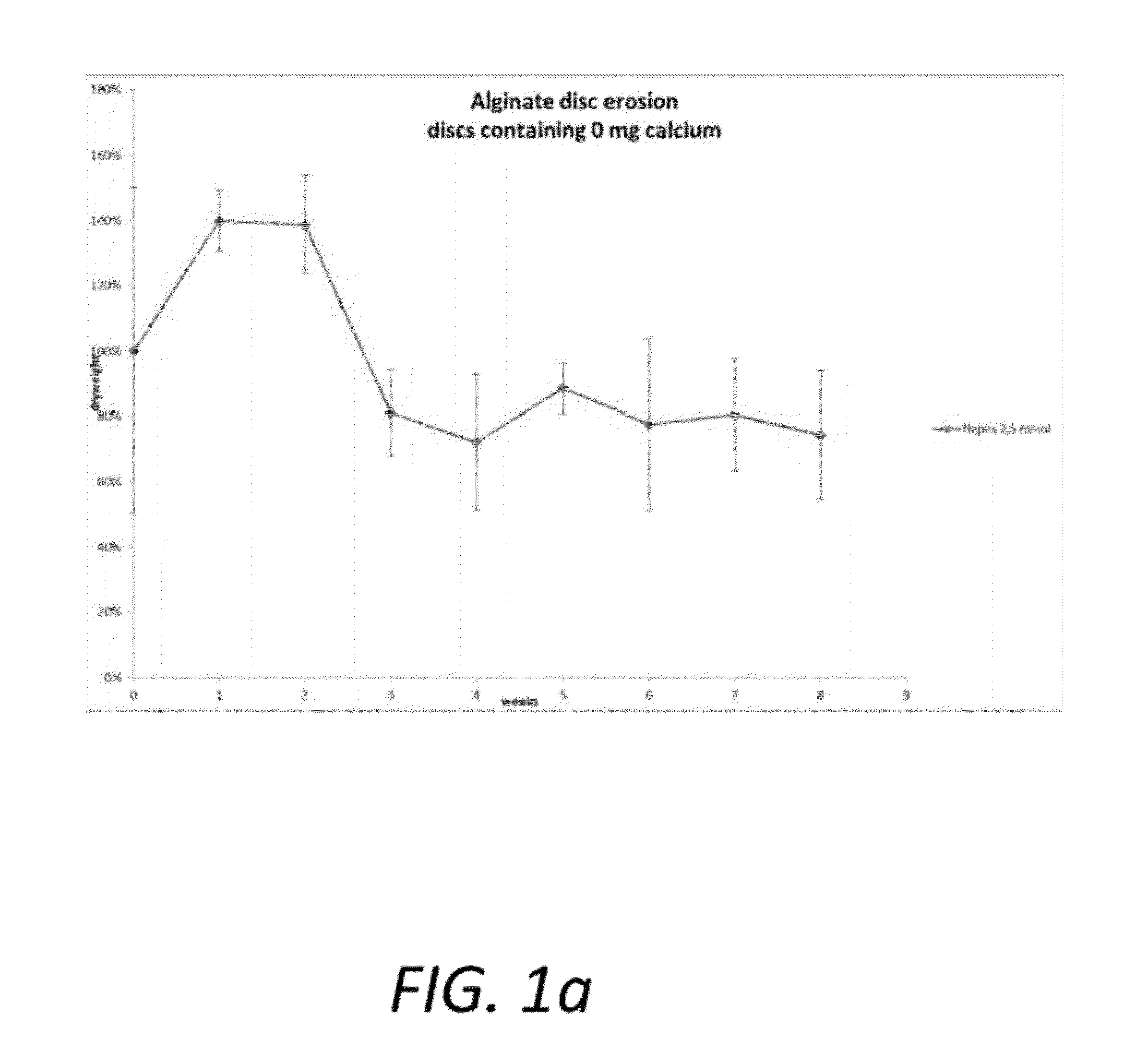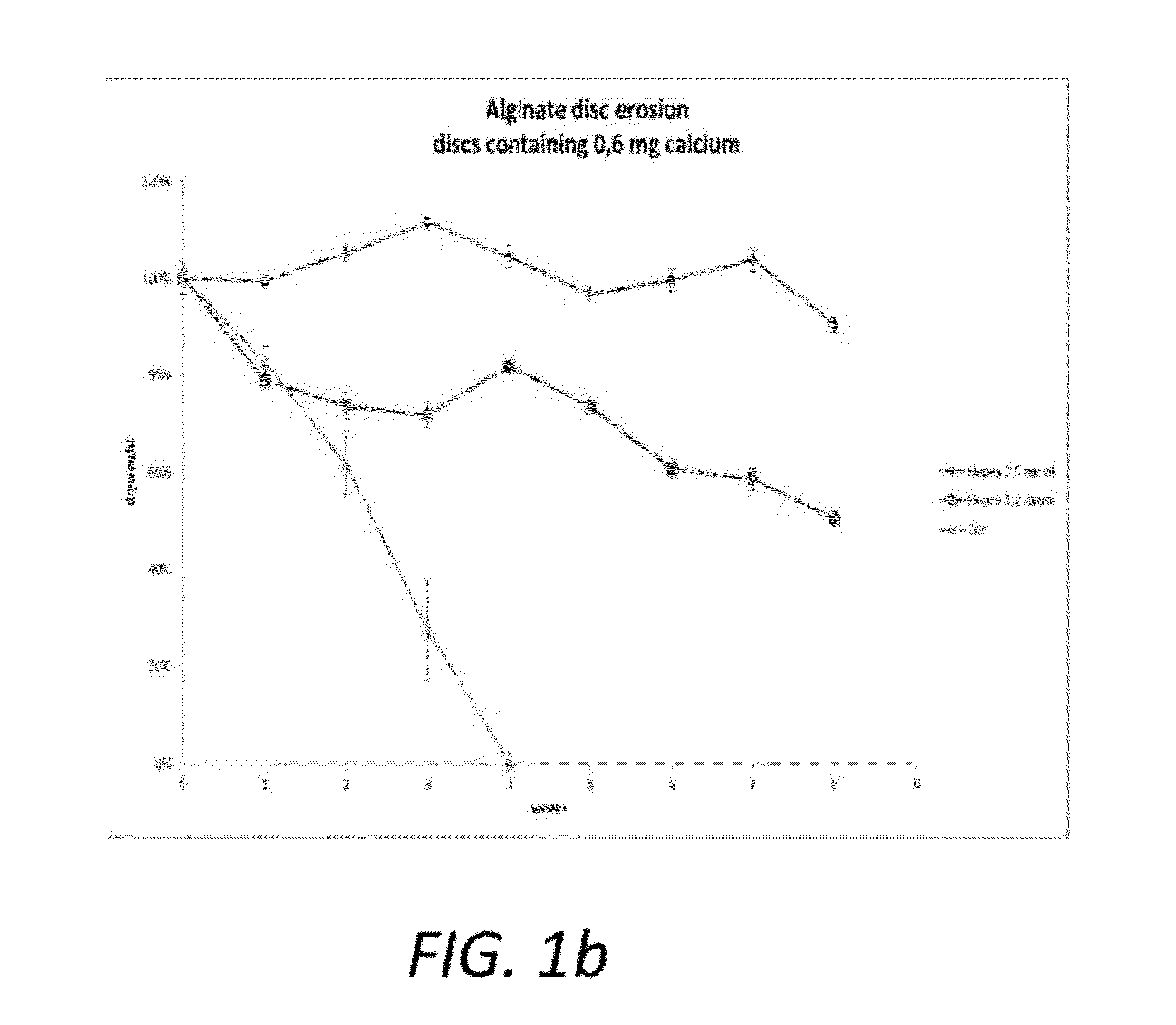Anti-Adhesion Alginate Barrier of Variable Absorbance
- Summary
- Abstract
- Description
- Claims
- Application Information
AI Technical Summary
Benefits of technology
Problems solved by technology
Method used
Image
Examples
example 1a
Alginate Mucoadhesive Sheet
[0073]6 g of alginate LF 10 / 60 and 6 g of Glycerol are dissolved in 100 g of Millipore water. This alginate solution is cast on a glass slide with an ERICHSEN coatmaster 509 MC, with a gap clearance of 700 μm. The emerging film is subsequently sprinkled, using a vaporizer, with a calcium lactate solution containing 4% calcium lactate in Millipore water. After 5-10 minutes reaction time, the procedure is repeated several times, until 20 ml of the calcium lactate solution has been sprinkled over the film. After drying about 72 h, the film can be peeled off the glass slide.
example 1b
Alginate Mucoadhesive / Anti-Adhesive Sheet
[0074]6 g of alginate LF 10 / 60 and 6 g of Glycerol are dissolved in 100 g of Millipore water. This alginate solution is cast on a glass slide with an ERICHSEN coatmaster 509 MC, with a gap clearance of 700 μm. The emerging film is subsequently sprinkled, using a vaporizer, with a calcium lactate solution containing 2% calcium lactate in Millipore water. After 5-10 minutes reaction time, the procedure is repeated several times, until 20 ml of the calcium lactate solution has been sprinkled over the film. After drying about 72 h, the film can be peeled off the glass slide.
example 2
Alginate Anti-adhesive Sheet
[0075]6 g of alginate LF 10 / 60 and 6 g of Glycerol are dissolved in 100 g of Millipore water. This alginate solution is cast on a glass slide with an ERICHSEN coatmaster 509 MC, with a gap clearance of 700 μm. The emerging film is subsequently sprinkled, using a vaporizer, with a calcium lactate solution containing 2% calcium lactate in Millipore water. After 5-10 minutes reaction time, the procedure is repeated several times, until 5 ml of the calcium lactate solution has been sprinkled over the film. After drying about 72 h, the film can be peeled off the glass slide.
PUM
| Property | Measurement | Unit |
|---|---|---|
| Adhesion strength | aaaaa | aaaaa |
| Adhesivity | aaaaa | aaaaa |
| Absorbance | aaaaa | aaaaa |
Abstract
Description
Claims
Application Information
 Login to View More
Login to View More - R&D
- Intellectual Property
- Life Sciences
- Materials
- Tech Scout
- Unparalleled Data Quality
- Higher Quality Content
- 60% Fewer Hallucinations
Browse by: Latest US Patents, China's latest patents, Technical Efficacy Thesaurus, Application Domain, Technology Topic, Popular Technical Reports.
© 2025 PatSnap. All rights reserved.Legal|Privacy policy|Modern Slavery Act Transparency Statement|Sitemap|About US| Contact US: help@patsnap.com



